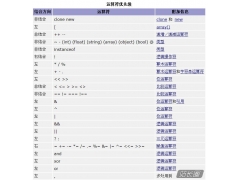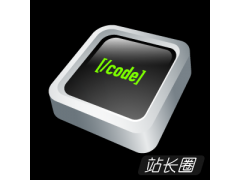将PHP作为Shell脚本语言使用
我们都知道,PHP是一种非常好的动态网页开发语言(速度飞快,开发周期短……)。但是只有很少数的人意识到PHP也可以很好的作为编写Shell脚本的语言,当PHP作为编写Shell脚本的语言时,他并没有Perl或者Bash那么强大,但是他却有着很好的优势,特别是对于我这种熟悉PHP但是不怎么熟悉Perl的人。
要使用PHP作为Shell脚本语言,你必须将PHP作为二进制的CGI编译,而不是Apache模式;编译成为二进制CGI模式运行的PHP有一些安全性的问题,关于解决的方法可以参见PHP手册(http://www.php.net)。
一开始你可能会对于编写Shell脚本感到不适应,但是会慢慢好起来的:将PHP作为一般的动态网页编写语言和作为Shell脚本语言的唯一不同就在于一个Shell脚本需要在第一行生命解释本脚本的程序路径:
#!/usr/local/bin/php -q
我们在PHP执行文件后面加入了参数“-1”,这样子PHP就不会输出HTTPHeader(如果仍需要作为Web的动态网页,那么你需要自己使用header函数输出HTTPHeader)。当然,在Shell脚本的里面你还是需要使用PHP的开始和结束标记:
<?php 代码 ?>
现在让我们看一个例子,以便于更好的了解用PHP作为Shell脚本语言的使用:
#!/usr/local/bin/php -q
<?php
print("Hello, world!\n");
?>
上面这个程序会简单的输出“Hello, world!”到显示器上。
一、传递Shell脚本运行参数给PHP:
作为一个Shell脚本,经常会在运行程序时候加入一些参数,PHP作为Shell脚本时有一个内嵌的数组“$argv”,使用“$argv”数组可以很方便的读取Shell脚本运行时候的参数(“$argv[1]”对应的是第一个参数,“$argv[2]”对应的是第二个参数,依此类推)。比如下面这个程序:
#!/usr/local/bin/php -q
<?php
$first_name = $argv[1];
$last_name = $argv[2];
printf("Hello, %s %s! How are you today?\n", $first_name, $last_name);
?>
上面的代码在运行的时候需要两个参数,分别是姓和名,比如这样子运行:
[dbrogdon@artemis dbrogdon]$ scriptname.ph Darrell Brogdon
Shell脚本在显示器上面会输出:
Hello, Darrell Brogdon! How are you today?
[dbrogdon@artemis dbrogdon]$
在PHP作为动态网页编写语言的时候也含有“$argv”这个数组,不过和这里有一些不同:当PHP作为Shell脚本语言的时候“$argv[0]”对应的是脚本的文件名,而当用于动态网页编写的时候,“$argv[1]”对应的是QueryString的第一个参数。
二、编写一个具有交互式的Shell脚本:
如果一个Shell脚本仅仅是自己运行,失去了交互性,那么也没有什么意思了。当PHP用于Shell脚本的编写的时候,怎么读取用户输入的信息呢?很不幸的是PHP自身没有读取用户输入信息的函数或者方法,但是我们可以效仿其他语言编写一个读取用户输入信息的函数“read”:
<?php
function read() {
$fp = fopen('/dev/stdin', 'r');
$input = fgets($fp, 255);
fclose($fp);
return $input;
}
?>
需要注意的是上面这个函数只能用于Unix系统(其他系统需要作相应的改变)。上面的函数会打开一个文件指针,然后读取一个不超过255字节的行(就是fgets的作用),然后会关闭文件指针,返回读取的信息。
现在我们可以使用函数“read”将我们前面编写的程序1修改一下,使他更加具有“交互性”了:
#!/usr/local/bin/php -q
<?php
function read() {
$fp = fopen('/dev/stdin', 'r');
$input = fgets($fp, 255);
fclose($fp);
return $input;
}
print("What is your first name? ");
$first_name = read();
print("What is your last name? ");
$last_name = read();
print("\nHello, $first_name $last_name! Nice to meet you!\n");
?>
将上面的程序保存下来,运行一下,你可能会看到一件预料之外的事情:最后一行的输入变成了三行!这是因为“read”函数返回的信息还包括了用户每一行的结尾换行符“\n”,保留到了姓和名中,要去掉结尾的换行符,需要把“read”函数修改一下:
<?php
function read() {
$fp = fopen('/dev/stdin', 'r');
$input = fgets($fp, 255);
fclose($fp);
$input = chop($input); // 去除尾部空白
return $input;
}
?>
三、在其他语言编写的Shell脚本中包含PHP编写的Shell脚本:
有时候我们可能需要在其他语言编写的Shell脚本中包含PHP编写的Shell脚本。其实非常简单,下面是一个简单的例子:
#!/bin/bash
echo This is the Bash section of the code.
/usr/local/bin/php -q << EOF
<?php
print("This is the PHP section of the code\n");
?>
EOF
其实就是调用PHP来解析下面的代码,然后输出;那么,再试试下面的代码:
#!/bin/bash
echo This is the Bash section of the code.
/usr/local/bin/php -q << EOF
<?php
$myVar = 'PHP';
print("This is the $myVar section of the code\n");
?>
EOF
可以看出两次的代码唯一的不同就是第二次使用了一个变量“$myVar”,试试运行,PHP竟然给出出错的信息:“Parse error: parse error in - on line 2”!这是因为Bash中的变量也是“$myVar”,而Bash解析器先将变量给替换掉了,要想解决这个问题,你需要在每个PHP的变量前面加上“\”转义符,那么刚才的代码修改如下:
#!/bin/bash
echo This is the Bash section of the code.
/usr/local/bin/php -q << EOF
<?php
\$myVar = 'PHP';
print("This is the \$myVar section of the code\n");
?>
EOF





